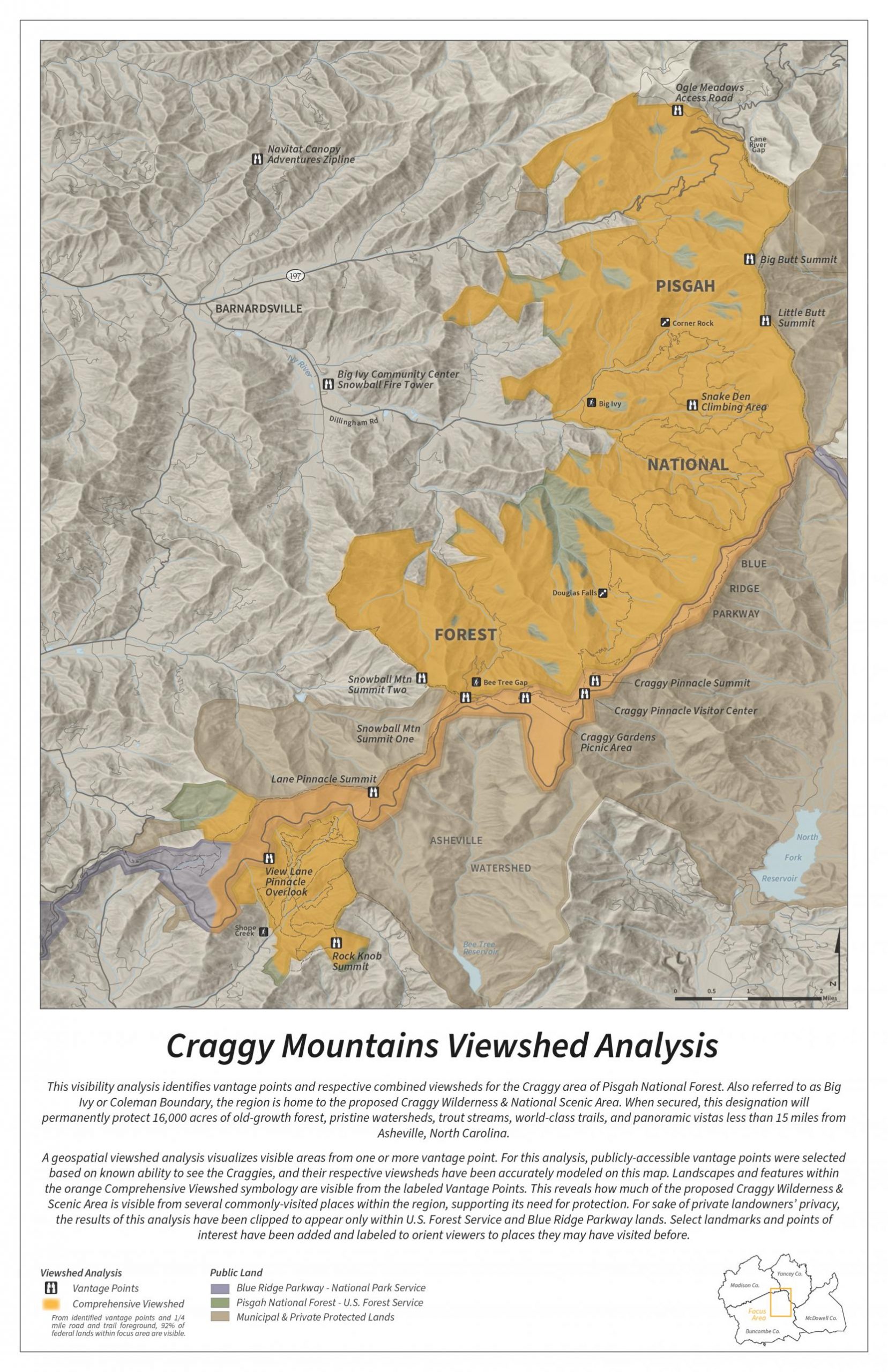Buncombe County Commission unanimously passes Craggy Mountain resolution
A proposal to create a new Craggy Mountain National Scenic Area and Wilderness got a boost last week when the Buncombe County Commission unanimously asked the U.S. Forest Service to recommend that Congress permanently protect the 16,000-acre portion of Pisgah National Forest.
Currently, the Forest Service is revising its long-range management plan for the Pisgah and Nantahala National Forest, including the beloved Craggy Mountains in north Buncombe County. The Craggies, including the Big Ivy watershed, Shope Creek, and the Blue Ridge Parkway Corridor, provide superlative scenery, world-class recreation for hikers and runners, mountain bikers, rock climbers, equestrians, hunters, and anglers, extensive old-growth forests, and pristine water quality for communities downstream.
Under the current management plan, the Craggy Mountains are open to development for logging and road construction, which can jeopardize old-growth forests, rare species, pristine watersheds, trout streams, trails and the panoramic vistas enjoyed by thousands of drivers along the Blue Ridge Parkway.
The public spoke out, and in response the Forest Service is considering expanded protections, but the public is not just saying they want more of the Craggies protected. They want more of the Craggies permanently protected.
Sam Evans, SELC’s National Forests and Parks Program Leader
SELC is part of a coalition supporting a congressional designation of the Craggy Mountains as a National Scenic Area, with more than half of the area protected as wilderness. Sam Evans, SELC’s National Forests and Parks Program Leader, wrote a letter to commissioners asking them to vote for the resolution and sharing a new analysis showing that 92% of federally managed land in the Craggies is visible from just a few popular viewpoints and the immediate foreground of the area’s roads and trails.
“The National Scenic Area would formally recognize the extraordinary value of the Craggies’ scenic integrity,” Evans wrote. “Most people experience the Craggies without ever setting foot on a trail. Around a half-million visitors per year enjoy this area’s scenic grandeur from the Blue Ridge Parkway.”
Throughout the planning process, the public has overwhelmingly asked for more protections for the Craggies—more than any other area. Those comments have made a difference already. In a draft of the Forest Service’s new management plan, the Forest Service proposed several alternatives that would increase protections for at least portions of the Craggies. But these protections are incomplete and short-term. In contrast, a National Scenic Area and Wilderness designation would permanently protect the area.
“The public spoke out, and in response the Forest Service is considering expanded protections, but the public is not just saying they want more of the Craggies protected,” Evans said. “They want more of the Craggies permanently protected.”
The proposed National Scenic Area and Wilderness would emphasize all the area’s current uses, including recreational and traditional activities like mountain biking, hiking, rock climbing, horseback riding, hunting, fishing, camping and edible plant gathering.
The Forest Service is currently accepting comments on its draft management plan. The Forest Service is currently accepting comments on its draft management plan and SELC will be launching a comment tool in the coming weeks. However, if you’d like to comment to the Forest Service that you support the Craggy Mountain National Scenic Area and Wilderness you can do so with Friends of Big Ivy or directly to the Forest Service.
A viewshed analysis of the Craggy Mountains is below.

